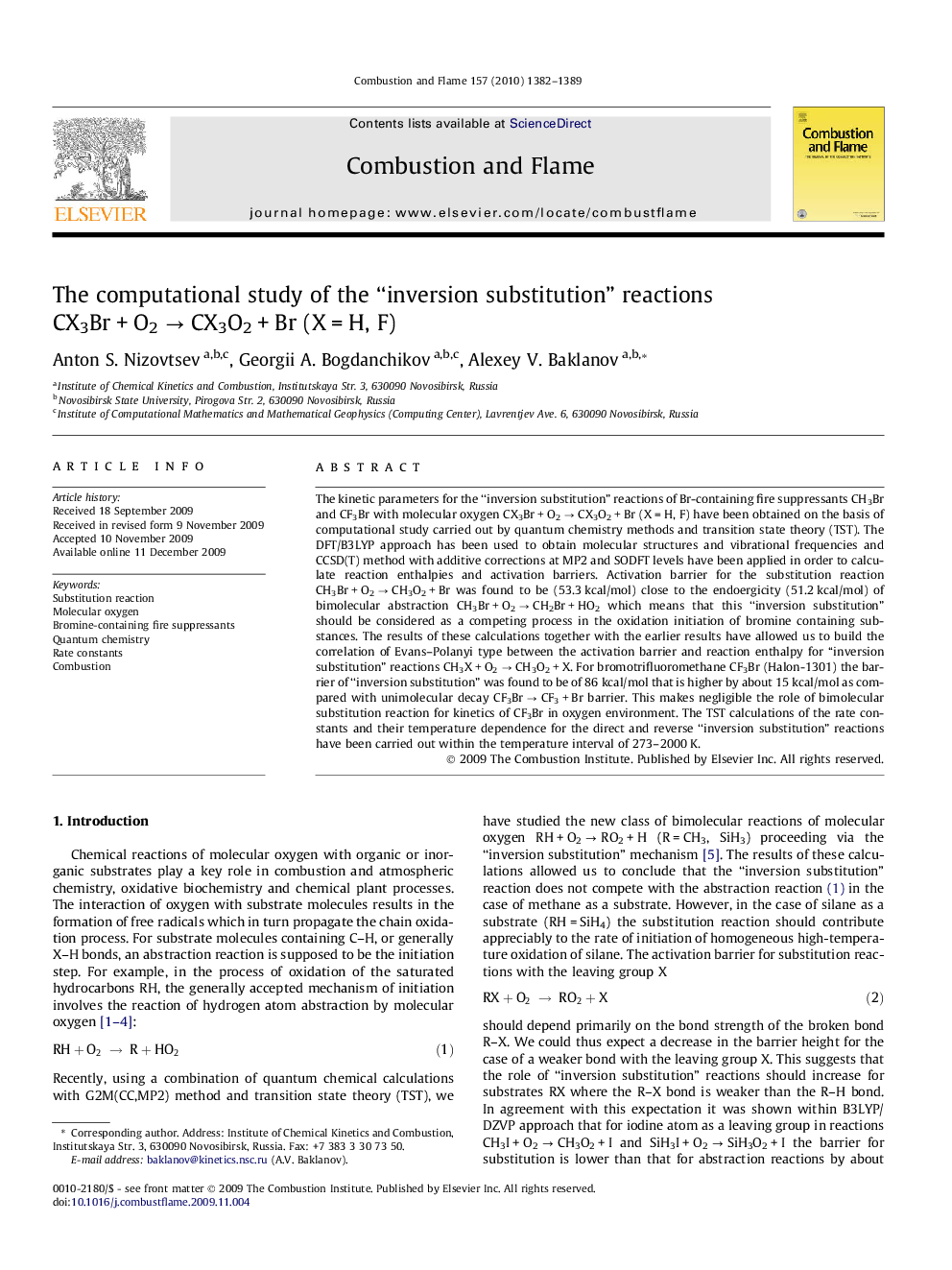| کد مقاله | کد نشریه | سال انتشار | مقاله انگلیسی | نسخه تمام متن |
|---|---|---|---|---|
| 169408 | 458000 | 2010 | 8 صفحه PDF | دانلود رایگان |

The kinetic parameters for the “inversion substitution” reactions of Br-containing fire suppressants CH3Br and CF3Br with molecular oxygen CX3Br + O2 → CX3O2 + Br (X = H, F) have been obtained on the basis of computational study carried out by quantum chemistry methods and transition state theory (TST). The DFT/B3LYP approach has been used to obtain molecular structures and vibrational frequencies and CCSD(T) method with additive corrections at MP2 and SODFT levels have been applied in order to calculate reaction enthalpies and activation barriers. Activation barrier for the substitution reaction CH3Br + O2 → CH3O2 + Br was found to be (53.3 kcal/mol) close to the endoergicity (51.2 kcal/mol) of bimolecular abstraction CH3Br + O2 → CH2Br + HO2 which means that this “inversion substitution” should be considered as a competing process in the oxidation initiation of bromine containing substances. The results of these calculations together with the earlier results have allowed us to build the correlation of Evans–Polanyi type between the activation barrier and reaction enthalpy for “inversion substitution” reactions CH3X + O2 → CH3O2 + X. For bromotrifluoromethane CF3Br (Halon-1301) the barrier of “inversion substitution” was found to be of 86 kcal/mol that is higher by about 15 kcal/mol as compared with unimolecular decay CF3Br → CF3 + Br barrier. This makes negligible the role of bimolecular substitution reaction for kinetics of CF3Br in oxygen environment. The TST calculations of the rate constants and their temperature dependence for the direct and reverse “inversion substitution” reactions have been carried out within the temperature interval of 273–2000 K.
Journal: Combustion and Flame - Volume 157, Issue 7, July 2010, Pages 1382–1389